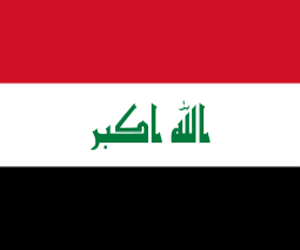PAFSA ANESTHESIA SAFETY STANDARDS
These standards are recommended for use of anesthesiologists, anesthesia nurses, anesthesia technicians, hospitals and administrators throughout the Arab world.
It provides guidance for maintaining patient safety and improving the quality of the anesthesia care provided to our patients while performing procedures under anesthesia or sedation.
They are written in reference to the “International Standards for a safe practice of Anesthesia” Adopted by the World Federation of Societies of Anesthesiologists (13th June 1992), and revised on 5th March 2008 and on 19th March 2010.
MINIMUM MANDATORY OPERATIONAL STANDARDS:
Those standards are the minimum required for administration of anesthesia for an elective surgical procedure, anything lower than those requirements shall not be considered as safe practice.
- Professional Leadership:
- Anesthesia services will have a leader responsible for the implementation of those standards inside and outside the operating rooms.
- Anesthesiologists appointed to the service shall be in an adequate number to avoid overwork and fatigue, they shall be well trained and privileged for procedures by hospital leadership.
- When non-medical personnel (nurses or technicians) support anesthesia services, those providers should be appropriately trained and closely supervised by qualified physicians’ anesthesiologists.
- Leaders shall initiate protocols (not restricted to) for pre-anesthesia care, anesthesia administration, medications… Those protocols shall be frequently reviewed and updated according to the latest’s scientific societies’ recommendations and guidelines. Anesthesia protocols must be adhered to by professionals, standardized in a hospital setup and regularly monitored for implementation and outcomes.
- Professional organizations :
Anesthesia professionals should be part of an appropriate national organization which monitors those standards of practice, supervise the level of training and the continuing education.
These organizations should form links with appropriate groups within the region and/or country and internationally.
- Continuous development:
In order to ensure an adequate standard of knowledge and expertise, and in order to support the maintenance of a professional development, it is recommended that professional organizations hold yearly activities for training.
- Documentation:
A complete and legible anesthesia record shall be documented for the preoperative anesthesia assessment, the intraoperative period and the postoperative course. It should be signed by the responsible anesthesiologist and kept in patients’ medical records.
Departments or services shall review regularly those records in the objective of improving the safety and quality of the services and the appropriateness of the care rendered.
- Incident reporting:
Each anesthesia department shall follow a mechanism to report (anonymously or not) an incident or mishap that affected patient safety during the administration of anesthesia. Those incidents may include sentinel events, adverse events, medications errors and even near misses.
The reporting of such events will be regularly analyzed and used to initiate actions for improving working systems.
Studies recently described sentinel events as “never events” that need to be thoroughly investigated. Examples of those are: wrong side surgery, wrong prosthesis, retained foreign object after central line insertion or other procedure, wrongly prepared high risk medication, IV administration of epidural medication, opioid or benzodiazepine overdosing during conscious sedation, transfusion of incompatible blood, misplaced gastric tubes, administration of wrong gases, failure to recognize or respond to a desaturation, air embolism…etc…
- Peer review and Mortality Morbidity reviews:
Mortalities and complex cases presenting complications and morbidities shall be reviewed with professional colleagues in a confidential, focused and multidisciplinary approach.
Deviations from approved protocols shall be identified and practices corrected.
- Staffing:
- An anesthesia professional should be dedicated to each patient and be immediately present throughout each anesthetic (general, regional, or monitored sedation), and should be responsible for the transport of the patient to the post-anesthesia recovery facility and the transfer of care to appropriately trained personnel.
- An anesthesia professional should retain overall responsibility for the patient during the recovery period and should be readily available for consultation until the patient has made an adequate recovery.
- If responsibility for care is transferred from one anesthesia professional to another, a ‘‘handover protocol’’ should be followed, during which all relevant information about the patient’s history, medical condition, anesthetic status, and plan should be communicated.
- An anesthesia professional should ensure, if aspects of direct care are delegated before, during, or after an anesthetic, that the person to whom responsibility is delegated is both suitably qualified and conversant with relevant information regarding the anesthetic and the patient.
- Where it is impossible for this standard to be attained and the surgeon or other individual assumes responsibility for the anesthetic, these arrangements should be reviewed and audited by an appropriately trained anesthesia professional.
- Facilities and equipment :
- All facilities where any type of anesthesia (including sedation) is administered shall be equipped appropriately (number and functionality).
- All facilities where recovery from any type of anesthesia (including sedation) is done shall be equipped appropriately (number and functionality).
- The safe use of equipment shall be monitored; an in-service training and competency of all individuals using it is mandatory.
- An inventory list of the equipment with their maintenance dates (preventive and active) will be documented.
- Anesthesia equipment should be conform to relevant national and international standards; i.e minimum requirements: functional anesthesia machines with the possibility to monitor inhaled and exhaled gases’ concentrations and airway pressures, intraoperative monitoring of ECG, NIBP, SaO2 and ETCO2.
- Resuscitative equipment including defibrillator shall be present in each area where anesthesia is administered.
- Medications :
- Anesthesia medications shall be stored according to pharmacy and manufacturer’s recommendations.
- Narcotics shall be kept in a locked cabinet; their preparation and discarding shall be countersigned by another professional.
- All medications used to provide and maintain anesthesia shall be labeled (name and dose). It is preferred to standardize labelling tools.
- Verbal orders are frequently used in anesthesiology; it is preferred to use the technique of “repeat order” by reading medication name, dose and expiry date before administration.
- MINIMUM MANDATORY MONITORING STANDARDS:
- The continuous presence of a vigilant and competent anesthesia professional is required for the provision of any type of anesthesia care, including monitoring of the patient’s status under anesthesia.
- Patients’ monitoring should not rely only on technology, continuous clinical observation is required because of the risks of equipment’s failures.
- Pre-anesthetic assessment :
- Patients undergoing surgeries or procedures under sedation must be assessed by an anesthesiologist prior to the procedure.
- This assessment shall include review of past medical and surgical history, medications, allergies and social habits, system review, a physical exam, a thorough airway assessment, review of lab and radiology tests and a formulation of the anesthesia plan including pain management. The plan must be clearly explained to the patient and all his questions attended to.
- Pre-anesthetic checks :
- The anesthesia professional must ensure the presence and the functionality of necessary equipment (anesthesia machine and supplies) before providing anesthesia.
- Alarms functionality (Oxygen failure, hypoxic gases, disconnections, desaturation, BP, HR , hypo and hypercarbia..) shall be also tested and limits set. The audibility of signals and alarms shall not be turned off at any time.
- He shall ensure the presence of competent and trained assistants.
- Verification of the integrity of oxygen supply is highly recommended.
- The development of checklists is recommended to help verifying the presence of equipment, supplies, medications and resources. This checklist must be checked on the beginning of each operating schedule in each operating room.
- The W.H.O “Surgical Safety Checklist” is highly recommended to be used before each case. The anesthesia provider will verify patient identity, type of procedure, and type of anesthesia. He will declare any concerns regarding the patient’s airway, oxygenation, need of blood , antibiotics, anticoagulation and any other related issues.
- Intraoperative monitoring :
- Oxygenation : Oxygen supply: Supplemental oxygen is HIGHLY RECOMMENDED for all patients undergoing general anesthesia. The inspired oxygen concentration shall be monitored continuously throughout each anesthetic. Continuous use of pulse oximetry is highly recommended.
- Airway and ventilation : Continuous monitoring of the airway and the ventilation is highly recommended: observation, auscultation and capnography are best recommended practices.
- Circulation :The circulation should be monitored continuously by the use of pulse oximetry. The display of the heart rate with a pulse oximeter and an electrocardiograph is highly recommended. Blood pressure shall be monitored under anesthesia at 5minutes interval.
- Temperature :Temperature monitoring should be available and used when clinically indicated. The continuous temperature measurement is recommended in prolonged procedures and young children)
- Neuromuscular function :The use of a peripheral nerve stimulator is recommended each time neuromuscular blocking agents are administered.
- Depth of anesthesia : Can be assessed clinically and by monitoring the inspired and expired inhalational gases’ concentrations.
- Post-anesthesia care :
- After ensuring adequate return of protective reflexes, patients shall be transferred safely to a recovery area. Monitoring during transportation can be clinical or assisted with devices as deemed necessary by the caring anesthesiologist.
- A thorough handover to recovery area staff shall be performed mentioning type of anesthesia, medications and fluids received, any blood losses and any concerns regarding postoperative care.
- All patients should be observed and monitored in the recovery period. Vital signs, oxygenation, ventilation, circulation, and temperature monitoring is recommended until consciousness has recovered
- Pain management: shall be initiated by the anesthesia provider using approved protocols and modalities.
In settings lacking resources and organization, the provision of anesthesia should be restricted to urgent lifesaving or emergent procedures. Every effort should be made to ensure meeting those standards.
- REFERENCES
- A. Merry; J. Cooper: International standards for a safe practice of anesthesia 2010. Canadian Journal of Anesthesia 2010; 57(11).
- ASA guidelines
- WHO Safe Surgery Checklist. (www.who.int/patientsafety/information_centre/documents/en/index.html)
- Never events: an anesthetic perspective; S. Adyanthaya MBBS FRCA; Vishal Patil MD FFARCSI. BJA Education. 2014; 14(5):197-201.


















